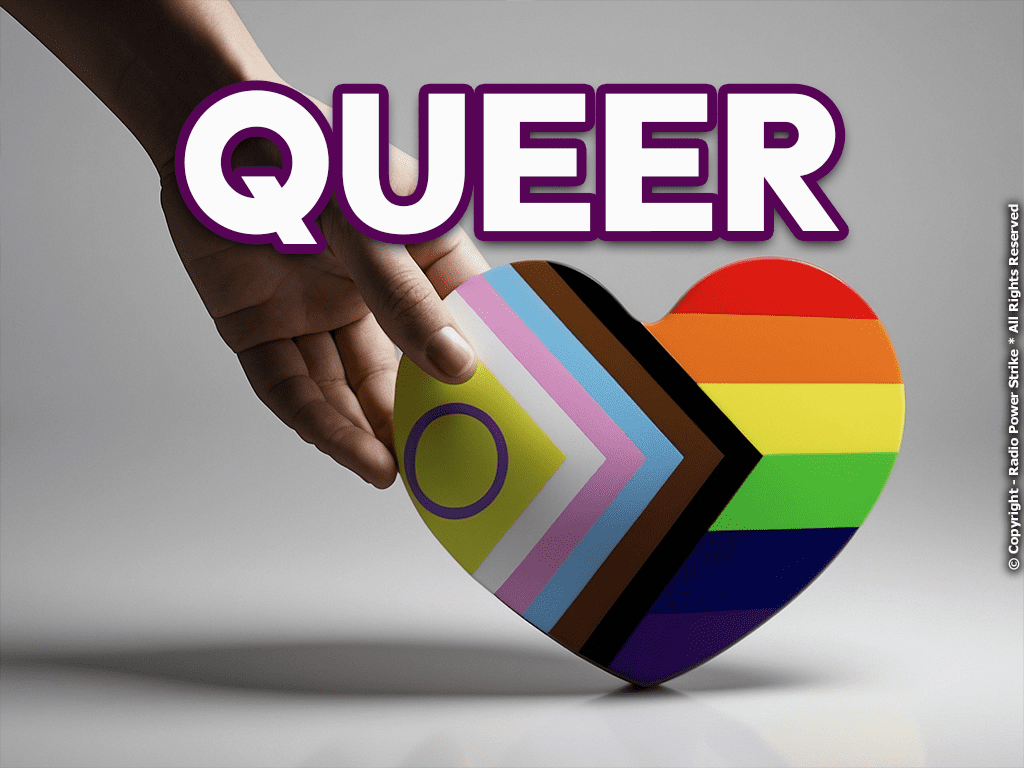What is Queer?
Listen to this article: [player id=24776]

Language is a potent tool that mirrors the nuances of ever-changing societies. As cultures evolve, so too do the terms we use to describe ourselves and others. A notable example of this linguistic evolution is the term “queer”. Once used derogatively, this word has been reclaimed and transformed into a symbol of resistance, identity, and inclusion.
The Evolution and Significance of ‘Queer’
The term “Queer” is multifaceted, having been employed in various ways over time, bearing different meanings to different people. Its shift from a derogative term to a symbol of pride and resistance reflects the complexities and cultural changes surrounding issues of sexuality and gender.
Over the years, “queer” has been both a source of criticism and a badge of empowerment. In its varied forms, the term embodies the ongoing struggle and redefinition of non-normative identities.
The rich journey of “queer”, evolving from an insult to a symbol of resistance, resonates deeply with many who have found refuge and identity under its umbrella.
Historical Origins and Sexual Politics
Originally, the word “Queer” meant “strange” or “unusual”. Over time, it was co-opted as a derogative term to describe those who defied heteronormative norms, especially during the 20th century.
In its sexual politics core, “queer” was a descriptor rejecting normative definitions of appropriate sexual behavior for females and males. It was employed to marginalize and insult, often thrown with harmful intentions.
However, much like many terms once used to harm, the origins of “queer” became a starting point for a powerful redefinition in the hands of those seeking justice and acceptance.
Reclaiming the Term
Over recent decades, there emerged a movement within the LGBTQIA+ community to reclaim and redefine the word. Instead of serving as an insult, “queer” morphed into a potent affirmation of identity, symbolizing resistance against norms and stereotypes.
This reclaiming was not an easy process. Many faced resistance and rejection, yet persisted in the belief that “queer” could represent more than just hate and prejudice.
Today, the term stands as a symbol of ongoing resistance and the fight against oppression, serving as a reminder that identities and meanings can shift with time and determination.
Modern Use and Community
Today, “queer” is broadly accepted as an umbrella term encompassing a vast range of sexual orientations and gender identities that diverge from the traditionally heterosexual and cisgender.
Beyond sexuality, “queer” describes specific gender communities. It stands for those who challenge traditional male/female dichotomies, offering language and identity to those who previously felt unrepresented.
The academic influence of the term also expanded, with “Queer Theory” emerging as a significant discipline. This theory aims to explore and understand the intricacies of gender and sexual identities, challenging established norms and questioning power structures.

Challenges and Criticisms
Despite its broad adoption and use, the term is not without controversy. While it might provide solidarity to marginalized groups, its over-categorization can reinforce dichotomies.
There are concerns that by defining “queer” in opposition to what’s “normal,” it might inadvertently bolster heteronormative norms. These criticisms underscore the need for constant introspection and evaluation of the language and terms we embrace.
Yet many argue that at its core, “queer” is about transcending and challenging norms, and its very existence spurs valuable conversations on identity, inclusion, and acceptance.
Linguistic Evolution
The language around sexuality and gender has undergone notable transformations over the past five decades. “Queer” stands out in this trajectory, showing a remarkable shift from a derogative term to an expression of pride.
Such linguistic shifts are indicative of broader social and cultural changes. Words not only reflect society but also have the power to shape it.
With “queer”, we have a tangible example of how a term, and the communities it represents, can evolve and flourish, influencing and being influenced by an ever-changing culture.
Defining ‘Queer’ Today
Contemporary times have brought varied definitions for “queer”. It can refer to someone attracted to people of multiple genders, indicate those challenging cultural norms around sexuality and/or gender identity/expression, or describe non-heterosexuals.
In its most radical form, “queer” is seen as a transgressive, revolutionary, and anti-assimilation stance, challenging conventional norms and expectations.
However, it’s essential to recognize that in some contexts, “queer” can still be used derogatively. This duality in the term’s perception and usage underscores its complexity and the ongoing work needed to ensure its respectful and inclusive application.

In exploring the journey of the word “queer”, it’s evident that words have a profound ability to shape and reflect identities, as well as a society’s cultural history. Reclaiming and redefining terms is a powerful form of self-affirmation and resistance against oppression. By embracing “queer” as a symbol of pride and inclusion, the LGBTQIA+ community illustrates human resilience and the potential for transformation, showing that evolution and progress are possible even under the most challenging circumstances.
